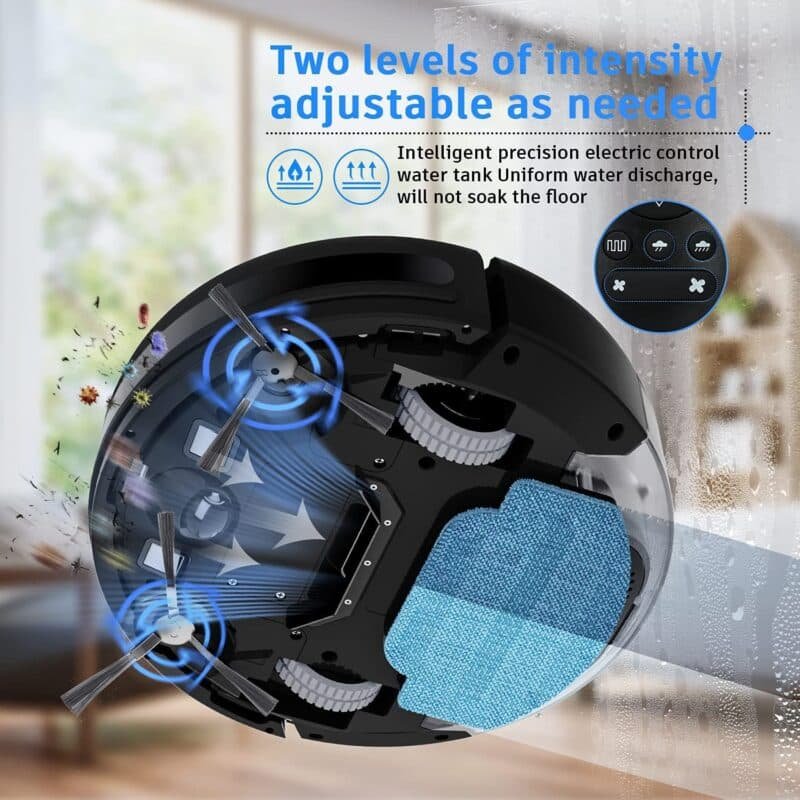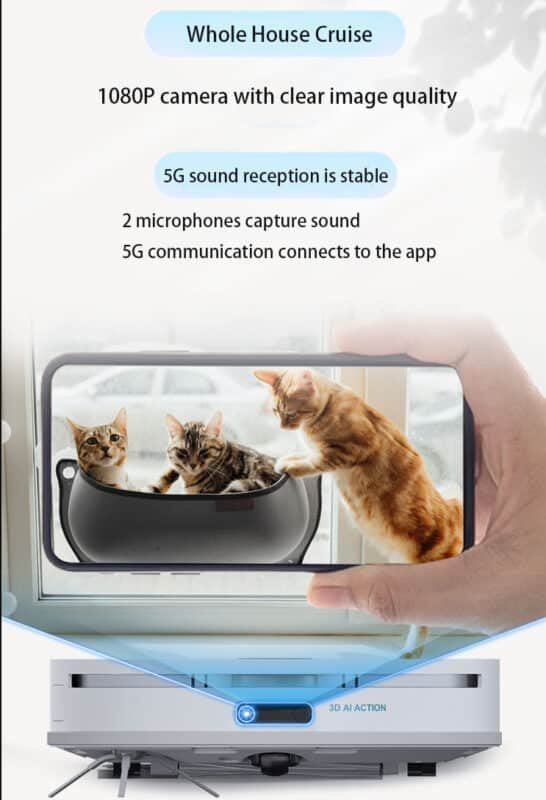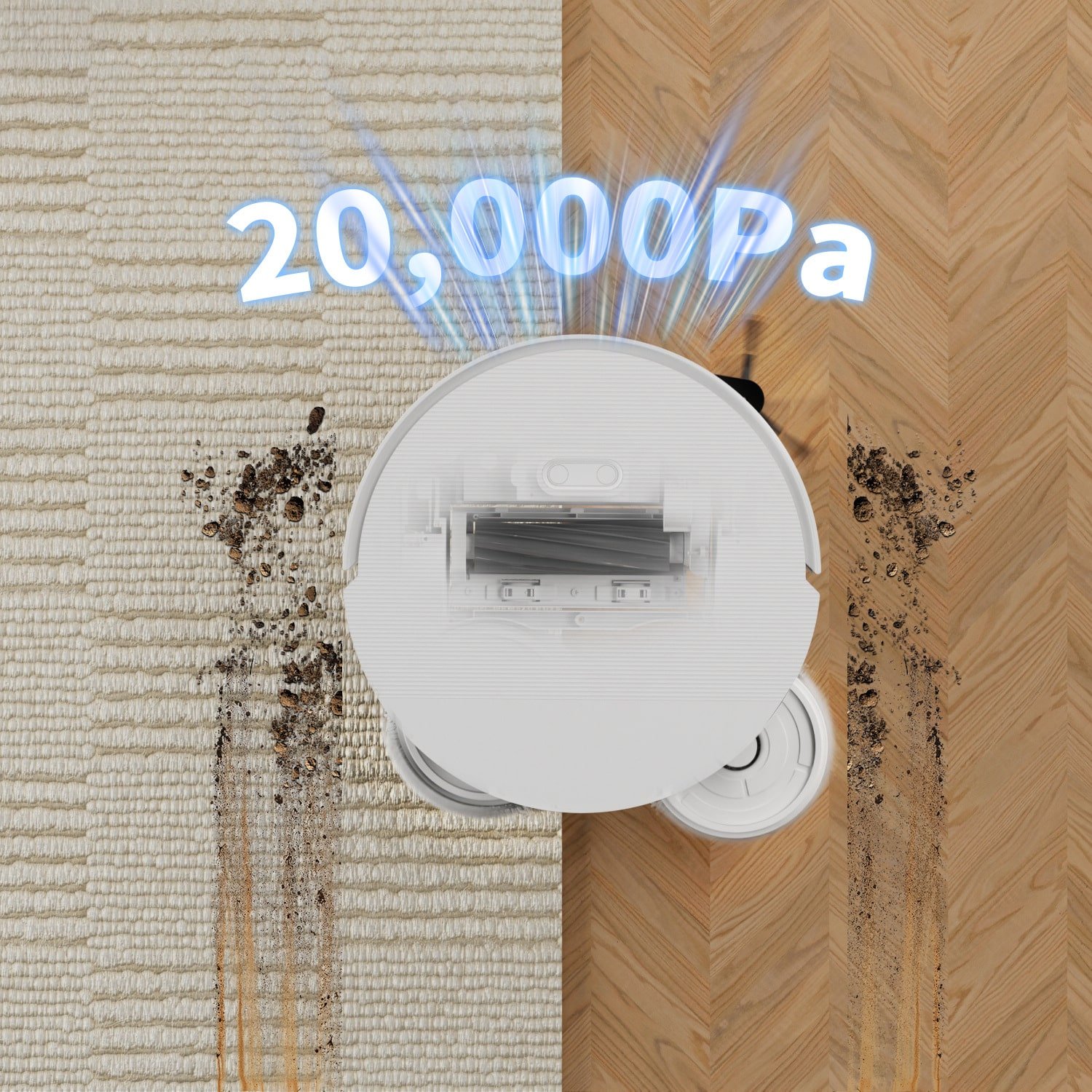Introduction
The smart home revolution is reshaping living standards across Europe and the US, and robotic vacuum cleaners are at the forefront of this transformation. If you’re a supplier targeting this lucrative sector, understanding the intricacies of this product isn’t just an advantage; it’s a necessity. What is a robotic vacuum cleaner? It’s more than just an automated cleaning device; it’s an advanced technology that has become a necessity in modern homes, offering convenience, efficiency, and intelligence that consumers crave. This guide delves into all aspects of robotic vacuum cleaners, providing the authoritative knowledge you need to make informed purchasing and marketing decisions.
What Is a Robot Vacuum Cleaner?
A Robot Vacuum Cleaner is an autonomous, disk-shaped home appliance designed to clean floors with minimal human intervention. Unlike traditional vacuums, these devices are equipped with intelligent sensors and software that allow them to navigate around furniture, avoid stairs, and adapt to different floor surfaces. They represent the perfect marriage of home appliance functionality and cutting-edge technology.

The core value of modern robotic vacuum cleaners lies in their intelligent navigation capabilities and autonomous operation. These devices can be scheduled via smartphone apps, integrate with voice assistants like Amazon Alexa and Google Home, and automatically return to their charging dock when their battery runs low. For international customers, understanding that you’re selling more than just a cleaning tool—instead, a smart home assistant—is crucial to market success. When evaluating manufacturers, ensure their production facilities are properly ISO-certified to ensure consistent quality of the precision components that power automation.
How a Robot Vacuum Cleaner Works: The Technology Deep Dive
Understanding How a Robot Vacuum Cleaner Works is essential for appreciating its value and effectively communicating it to your customers. The operation can be broken down into several sophisticated technological processes:
- Intelligent Navigation and Mapping: High-end models use LDS (Laser Detection System) or LiDAR (Light Detection and Ranging) to scan their environment continuously. This technology creates a precise map of the home, enabling methodical cleaning paths rather than random movement. This is a significant selling point for customers frustrated with inefficient cleaning patterns.
- Obstacle Avoidance and Sensors: A combination of bump sensors, cliff sensors, and optical encoders allows the device to navigate complex home environments safely. These sensors prevent falls down stairs, minimize collisions with furniture, and enable the device to recognize when it’s stuck, at which point it will send an alert to the user’s smartphone.
- Cleaning Mechanism and Suction Power: The cleaning process involves a multi-stage system. Side brushes direct debris toward the main center, where a combination of bristle brushes and rubber rollers agitate and lift dirt. A powerful motor then creates strong suction—often exceeding 4800Pa in premium models—to pull debris into the dustbin. This powerful suction easily removes dust, dirt, debris, and pet hair .
- Battery Technology and Self-Charging: Most units utilize high-capacity lithium-ion batteries that provide 90 to 200 minutes of cleaning on a single charge. When the battery runs low, the device will autonomously navigate back to its charging dock, then potentially resume cleaning exactly where it left off—a feature known as “recharge and resume.”
Key Features and Technologies Defining Modern Robot Vacuum Cleaners
The evolution of the Robot Vacuum Cleaner has been remarkable, with several features now defining market leaders:
- Smart Home Integration: Compatibility with Amazon Alexa, Google Assistant, and Apple HomeKit allows users to start, stop, or schedule cleaning with simple voice commands.
- App Control and Customization: Dedicated mobile applications enable users to set cleaning schedules, create virtual boundaries, view cleaning histories, and monitor the device’s path in real-time.
- Specialized Cleaning Modes: Modern units offer various modes tailored to specific needs, including spot cleaning for concentrated areas, edge cleaning for baseboards, and maximum suction modes for high-traffic zones.
- Self-Emptying and Self-Cleaning Bases: Premium models feature docking stations that automatically empty the collected dust from the robot’s bin into a larger container in the base, sometimes capable of holding up to 30-60 days of debris. Some advanced docks also feature self-washing and drying functions to keep the roller fresh .
- Advanced Filtration Systems: For allergy sufferers, HEPA (High-Efficiency Particulate Air) filters are crucial, as they trap 99.97% of particles as small as 0.3 microns, including pollen, dust mites, and pet dander.
Market Analysis and Target Audience
The potential customer base for robotic vacuum cleaners is diverse and expanding:
- Busy Professionals and Families: Individuals with limited time for household chores appreciate the scheduling functionality and daily cleaning automation.
- Pet Owners: Models specifically designed with tangle-free rubber rollers and enhanced suction are exceptionally popular in this segment, as they efficiently manage pet hair and dander.
- Elderly and Individuals with Mobility Issues: The autonomous nature of these devices provides independent cleaning capability without physical strain.
- Tech Enthusiasts: This group values the latest features, such as precise LiDAR mapping, smart home integration, and advanced AI obstacle avoidance.
Understanding these segments allows businesses to tailor their product offerings and marketing strategies more effectively. For suppliers, offering OEM service becomes crucial here, as it enables customization for these specific market niches.
Manufacturing Standards and Business Opportunities
For businesses, the manufacturing backbone is as important as the product itself. Two critical elements ensure market success:
- Quality Assurance through ISO Certification: A manufacturer’s ISO certification is not just a badge—it’s a systematic guarantee of quality, consistency, and reliability. This certification ensures that every Robot Vacuum Cleaner that comes off the production line meets international standards for performance and safety, significantly reducing the risk of defects and returns.
- Brand Customization with OEM Service: To stand out in a competitive market, the ability to offer customized products is invaluable. A reliable OEM service allows you to develop unique branding, customize product features, and create exclusive models that differentiate your offerings from generic alternatives. This service can include everything from custom exterior designs and packaging to tailored software interfaces and specialized accessory bundles.
Frequently Asked Questions (FAQs)
Q1: What is the main advantage of a robot vacuum cleaner over a traditional vacuum?
A: The primary advantage is autonomy. A Robot Vacuum Cleaner can maintain your floors daily without any effort on your part, working around your schedule and adapting to your home’s layout automatically.
Q2: How does a robot vacuum cleaner navigate around a home without getting stuck?
A: It uses a combination of laser mapping, various sensors, and sophisticated algorithms. These technologies work together to create a map, identify obstacles, and calculate the most efficient path while avoiding common hazards like cords, furniture, and stairs.
Q3: Are robot vacuums effective on both carpets and hard floors?
A: Yes, most modern models are designed for multiple surfaces. Many feature automatic carpet detection, which boosts suction power when transitioning from hard floors to carpets for a deeper clean.
Q4: What should businesses look for in a robot vacuum manufacturer?
A: Key factors include technical innovation, proven reliability through ISO certification, and flexible OEM service for branding and customization. The ability to provide products with strong suction, long battery life, and intelligent navigation is fundamental.

Conclusion
The Robot Vacuum Cleaner represents a significant and growing segment in the home appliance market. For businesses, success lies in understanding that you’re not just trading a cleaning product but providing an intelligent home solution. By partnering with manufacturers who combine technological innovation with rigorous quality standards and offering customization through reliable OEM service, you can position your brand at the forefront of this dynamic industry. The future of home cleaning is autonomous, and the market opportunity for well-informed suppliers is substantial.


